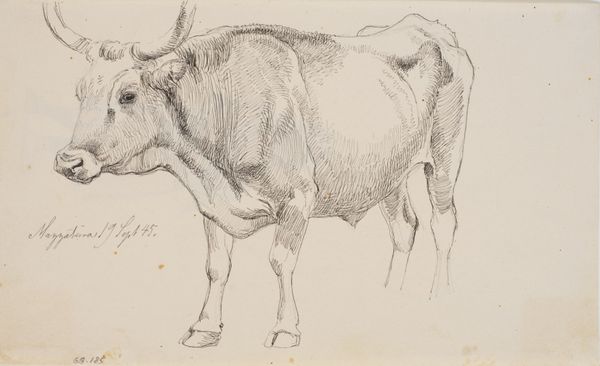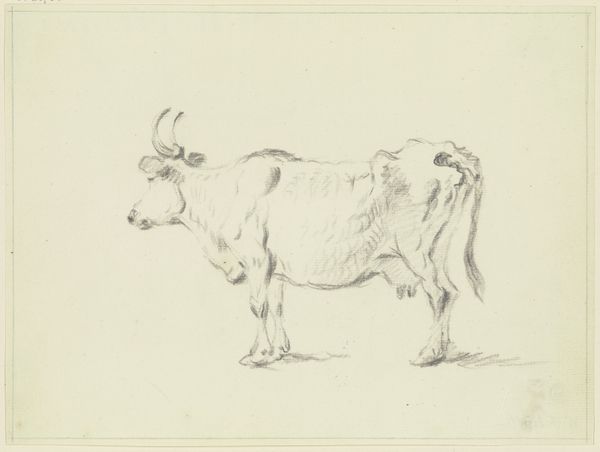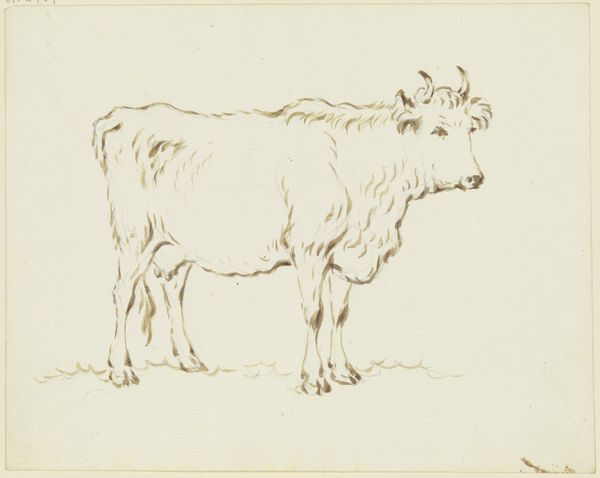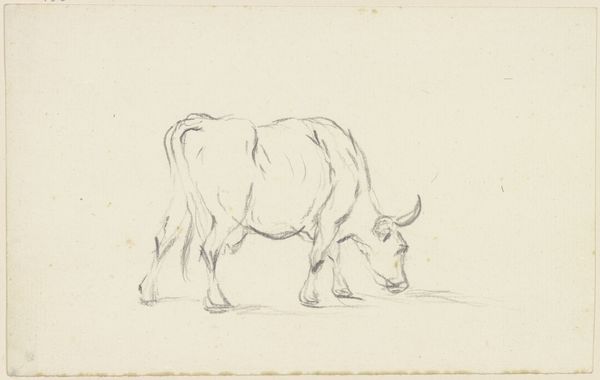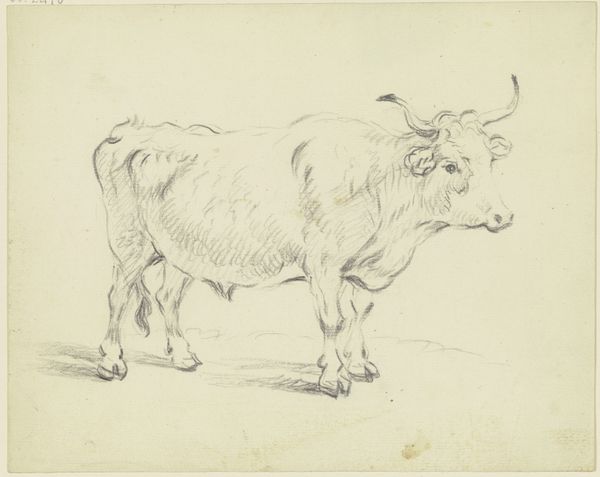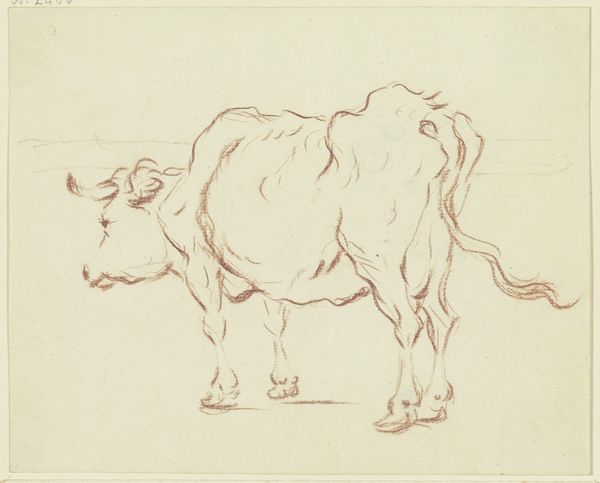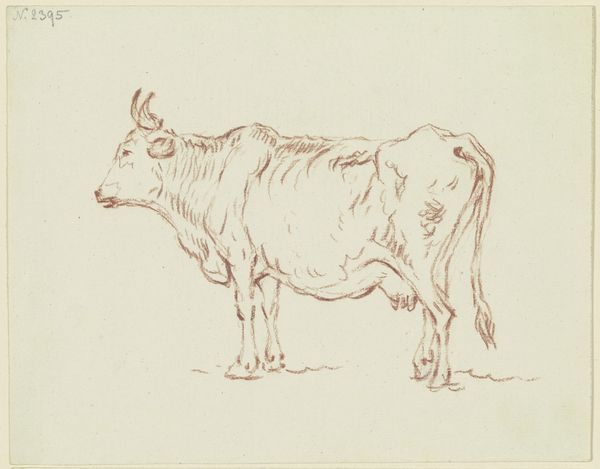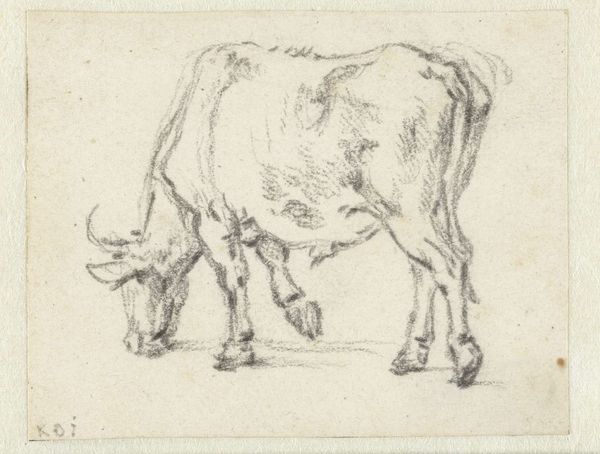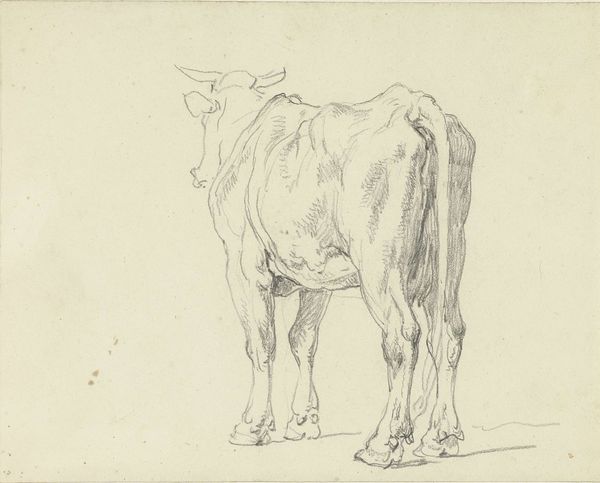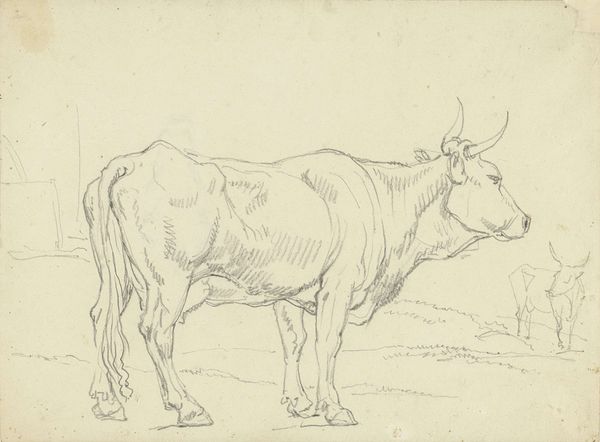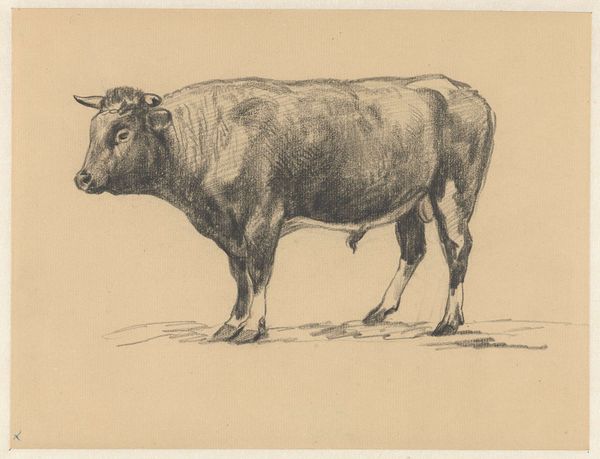
Romersk tyr med klokke om halsen, set skråt bagfra 1845
0:00
0:00
drawing, ink, pencil
#
portrait
#
drawing
#
landscape
#
ink
#
pencil
#
realism
Dimensions: 204 mm (height) x 273 mm (width) (bladmaal)
Editor: This is "Roman Bull with Bell around its Neck, seen Diagonally from Behind" by Johan Thomas Lundbye, created in 1845. It's a drawing in ink and pencil. I'm struck by how realistic it is. It's like Lundbye was trying to capture every detail of this bull, from the texture of its hide to the curve of its horns. What do you see in this piece? Curator: Focusing on its intrinsic properties, I'm immediately drawn to the line work. Notice how Lundbye employs hatching and cross-hatching to model the form, creating a sense of volume and mass. Consider how the density of the lines increases in areas of shadow, lending the bull a sculptural quality. Editor: So, it's not just about representing a bull, but also about showing how light and shadow create form? Curator: Precisely. The stark contrast between the shaded areas and the highlights emphasizes the play of light across the bull's body. This treatment elevates the work beyond a simple representational study. Think about how the artist is also thinking about compositional balance. Editor: The placement of the bull within the frame does give it a feeling of monumentality, even though it’s just a drawing. I never thought about it like that, I guess I need to stop focusing on what I'm seeing, and look at how it's presented to me on a compositional level. Curator: Indeed. It’s in this formal interplay of line, light, and composition that the work finds its meaning and artistic merit. Through careful analysis of these elements, one gains a deeper understanding of the artist's intention and skill. Editor: I'll definitely pay more attention to those formal elements now! Thanks! Curator: My pleasure. Always remember that art speaks through its intrinsic forms as much as through its subject matter.
Comments
No comments
Be the first to comment and join the conversation on the ultimate creative platform.
